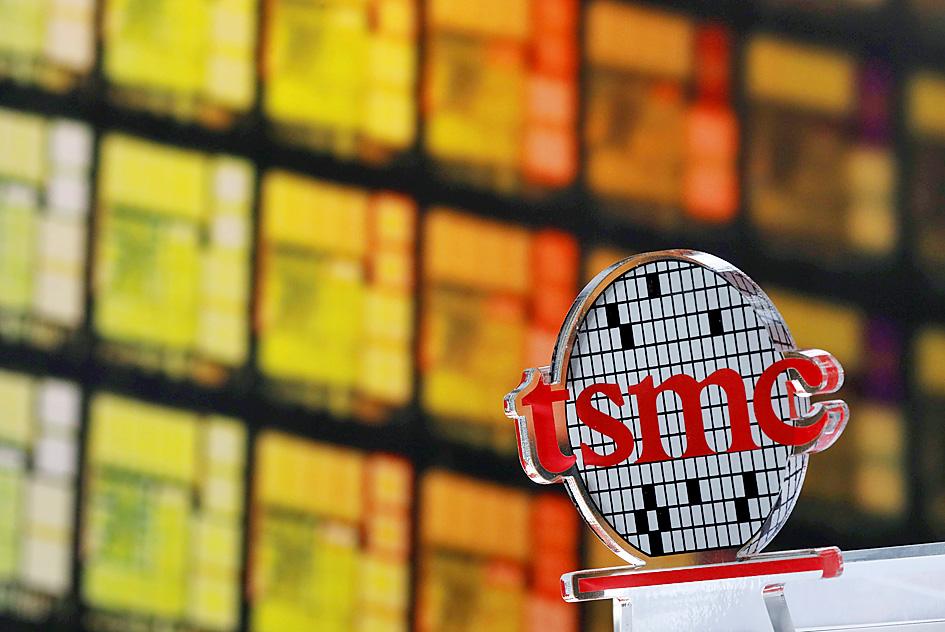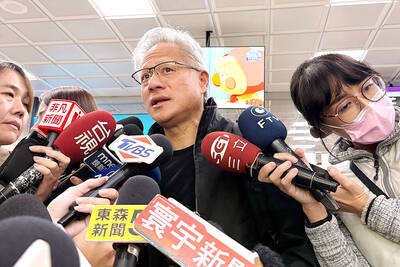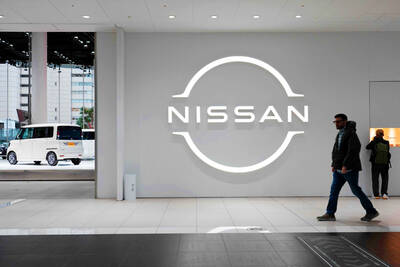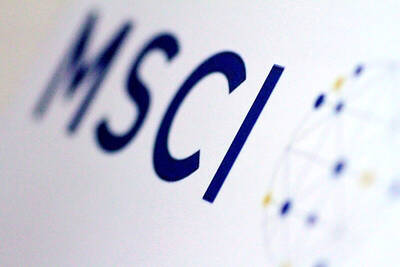US President Donald Trump’s administration is in talks with semiconductor companies about building chip factories in the US, the Wall Street Journal reported yesterday.
The Trump administration has held talks with Intel Corp and Taiwan Semiconductor Manufacturing Co (TSMC, 台積電), the newspaper reported, citing sources and a correspondence viewed by the Journal.
TSMC has been talking with the US departments of commerce and defense and with Apple Inc, one of its largest customers, about building a chip factory in the US, the report added.

Photo: Reuters
Certain US officials are also looking at helping South Korea’s Samsung Electronics Co, which has a chip factory in Austin, Texas, to expand its contract-manufacturing operations in the US, the Journal reported.
It did not give details of any incentives that might be on offer to chipmakers.
TSMC, Apple, Intel and Samsung Electronics were not immediately available for comment.
TSMC remained the world’s third-largest IC supplier in the first quarter of the year, US-based market advisory firm IC Insights said.
In a research report released last week, IC Insights said that TSMC benefited from its efforts to develop the advanced 7-nanometer (nm) process, and its sales for January to March rose 45 percent from a year earlier to US$10.32 billion.
During that same period, Apple and China’s HiSilicon Technologies Co (海思半導體) ordered a large number of TSMC’s 7nm processors for smartphones, IC Insights said.
HiSilicon, which is owned by Huawei Technologies Co (華為), has become a major TSMC client, accounting for 14 percent of TSMC’s total sales last year, it said.
Last year, 37 percent of TSMC’s total revenue came from Apple and HiSilicon, IC Insights said.
In the first quarter, US-based Intel Corp remained the top semiconductor supplier, posting US$19.51 billion in sales, a 23 percent increase from a year earlier, IC Insights said.
Samsung followed with sales of US$14.80 billion, up 15 percent year-on-year, while SK Hynix Inc, also of South Korea, ranked fourth with sales of US$6.04 billion, followed by US-based Micron Technology Inc with US$4.80 billion, IC Insights said.
HiSilicon’s first-quarter sales rose 54 percent year-on-year, which increased its revenue to US$2.67 billion and boosted its rankings to 10th from 15th the previous year, it said.
It was the first time that HiSilicon, which sells more than 90 percent of its products to Huawei, was listed among the world’s top 10 IC suppliers.
In the first quarter, the 10 largest IC suppliers globally posted a combined US$72.49 billion in sales, up 16 percent from a year earlier, IC Insights said.

PERSISTENT RUMORS: Nvidia’s CEO said the firm is not in talks to sell AI chips to China, but he would welcome a change in US policy barring the activity Nvidia Corp CEO Jensen Huang (黃仁勳) said his company is not in discussions to sell its Blackwell artificial intelligence (AI) chips to Chinese firms, waving off speculation it is trying to engineer a return to the world’s largest semiconductor market. Huang, who arrived in Taiwan yesterday ahead of meetings with longtime partner Taiwan Semiconductor Manufacturing Co (TSMC, 台積電), took the opportunity to clarify recent comments about the US-China AI race. The Nvidia head caused a stir in an interview this week with the Financial Times, in which he was quoted as saying “China will win” the AI race. Huang yesterday said

Nissan Motor Co has agreed to sell its global headquarters in Yokohama for ¥97 billion (US$630 million) to a group sponsored by Taiwanese autoparts maker Minth Group (敏實集團), as the struggling automaker seeks to shore up its financial position. The acquisition is led by a special purchase company managed by KJR Management Ltd, a Japanese real-estate unit of private equity giant KKR & Co, people familiar with the matter said. KJR said it would act as asset manager together with Mizuho Real Estate Management Co. Nissan is undergoing a broad cost-cutting campaign by eliminating jobs and shuttering plants as it grapples

The Chinese government has issued guidance requiring new data center projects that have received any state funds to only use domestically made artificial intelligence (AI) chips, two sources familiar with the matter told Reuters. In recent weeks, Chinese regulatory authorities have ordered such data centers that are less than 30 percent complete to remove all installed foreign chips, or cancel plans to purchase them, while projects in a more advanced stage would be decided on a case-by-case basis, the sources said. The move could represent one of China’s most aggressive steps yet to eliminate foreign technology from its critical infrastructure amid a

MORE WEIGHT: The national weighting was raised in one index while holding steady in two others, while several companies rose or fell in prominence MSCI Inc, a global index provider, has raised Taiwan’s weighting in one of its major indices and left the country’s weighting unchanged in two other indices after a regular index review. In a statement released on Thursday, MSCI said it has upgraded Taiwan’s weighting in the MSCI All-Country World Index by 0.02 percentage points to 2.25 percent, while maintaining the weighting in the MSCI Emerging Markets Index, the most closely watched by foreign institutional investors, at 20.46 percent. Additionally, the index provider has left Taiwan’s weighting in the MSCI All-Country Asia ex-Japan Index unchanged at 23.15 percent. The latest index adjustments are to